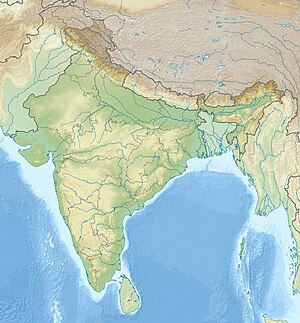Saptarishi Tila statue
| Saptarishi Tila statue | |
|---|---|
 Female Statue possibly representing Kambojika, the Chief Queen of Mahakshatrapa Rajula
(Kamboj). Found in the Saptarishi Mound, the same mound where the Mathura lion capital was found. Circa 1st century CE. Other angles. | |
| Material | Blue schist |
| Size | life-size |
| Period/culture | 1st century CE |
| Discovered | 27°36′00″N 77°39′00″E |
| Place | Saptarishi Mound, Mathura Museum |
 Saptarishi Mound, Mathura , (Discovery) | |
The Saptarishi Tila statue, also called the Kambojika statue,
The statue wears a sleeved blouse, a full skirt, and a torque and necklace like those of the Kamboj
Origin
The statue is an example of the
Interpretation
Kamuia, Queen of Rajuvula
Since the statue was found in the same mound as the Mathura lion capital, many authors have interpreted it as being a statue of the First Queen of Rajuvula, Kamuia Ayasa, also called Kambojika.[3] This is also the interpretation of the Mathura Museum, the notice of which says she is "probably Kambojika, the Chief Queen of Rajuvula".[5] According to Rosenfield, in order for it to be a statue of Kamuia Ayasa, it would have had to be made in the early 1st century CE, which is unlikely, given our knowledge of Gandharan statuary, generally dated to the 2nd century at the earliest.[3]
Hariti
Other authors interpret the statue of the goddess Hariti.[3][6]
A remain of a child hand can be seen on the left arms, which supports the identification of the statue as Hariti.[3]
| Hariti statues from Gandhara |
|
See also
References
- ^ See Mathura Museum notice to the statue
- ^ a b Hellenism in Ancient India, by Kamboj Nath Banerjee p.89
- ^ a b c d e f g The Dynastic art of the Kushans, John Rosenfiled, University of California Press, p.xiv
- ^ Mathura Museum notice
- ^ Mathura Museum notice
- ^ Aspects of Indian Art: Papers Presented in a Symposium at the Los Angeles County Museum of Art, October, 1970, Brill Archive, 1972, p.38







